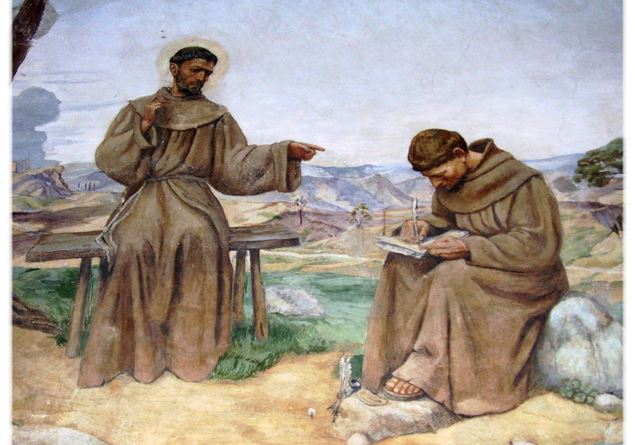by Federico Bianchetti
The name chosen by the cardinal Prevost for his pontificate is that of Leone IV, in the line of succession compared to Pope Pecci Leone XIII, the great Pope of the Rerum Novarum, attentive to social justice, dignity and workers’ rights, as well as the great Leo Magno, the one who ensured Lace by meeting Attila. Many would have preferred that Francesco II had chosen. But on closer inspection there is a detail in the name lion who binds him to Francesco d’Assisi, the inspiring holy of Pope Bergoglio, and we like to think that the new pontiff has chosen him also for this. A suggestion, a coincidence, or perhaps a drawing of providence. Leone in fact is the name of Francesco d’Assisi’s best friend, who also served as a particular secretary.
Friar Leone of Assisi is one of the most discreet but decisive figures of the Franciscan affair. Non -preacher, not superior, nor founder of convents, but Guardian of living memory of the patron of Italy.ANDra a discreet presence. So discreet that if he had not transcribed with his painstaking calligraphy the Canticle of creatureswe might think that it has never existed. And instead there was, there was all right. We find it in Verna, while witnessing the stigmatization of his friend Francesco, and says nothing. We find it at the Porziuncola, upon the death of the saint, and again is silent. But record. He writes. Remember. Keeps.
Presumably born towards the end of the twelfth century, Leone soon joined the movement of the friars minor, becoming one of the very first companions of the saintprobably between 1210 and 1212. As mentioned He to transcribe, by his own hand, the “Canticle of Creatures” (also called “Cantico di Frate Sole”) in the version preserved in Code 338 of the Municipal Library of Assisi, one of the most precious documents of Italian literature. The autograph copy of the Blessing to Friar Leonewritten by San Francesco in 1226, now kept in the same code, which still bears, in the final part, a cross drawn by hand by the saint.
Lion was Ocular witness of the stigmatization Di Francesco alla Verna in 1224. In a note from Code 338 He wrote that he saw the signs of the plagues in the body of the friend “with his own eyes”, while maintaining a reserved tone, as he began to his character. It was also present at the death of Francescowhich took place on the evening of 3 October 1226, to the Porziuncola. More than a simple “secretary”, friar lion was spiritual confidantthe one to whom Francesco entrusted the deepest thoughts, the anxieties and doubts. In his letters Francesco turns to him with tenderness and trust. The Letter to Friar Leonewhere Francesco tells him: “So I tell you, my son, like a mother” – an expression that says everything about their bond. The letter was music by numerous composers, including Angelo Branduardi, and inspired a famous song of the musical “Forza come people”. One of the most touching scenes is dedicated to the concept of Perfect Letiziain which St. Francis explains to Friar Leone the true meaning of Christian joy.
After the death of the saint, Leone sided strongly against any attempt to “normalize” the order. He was close to friars like Elia and Ubertino da Casale, who criticized the removal of the Franciscan community from radical poverty wanted by the founder. Starting from the 1930s, Leone was Among the main authors and compilers of the first biographies Di Francesco, opposing the official version drawn up by Tommaso da Celano. He died around 1271, and was buried in the Basilica of San Francesco, next to the altar of the Maddalena. On him, Dante did not spend verses, but Without friar Leone, much of what we know about St. Francis should be lost or distorted. It was the scribe of the soul of the saint. The silent custodian, who did not seek glory but left the world an indelible testimony.


